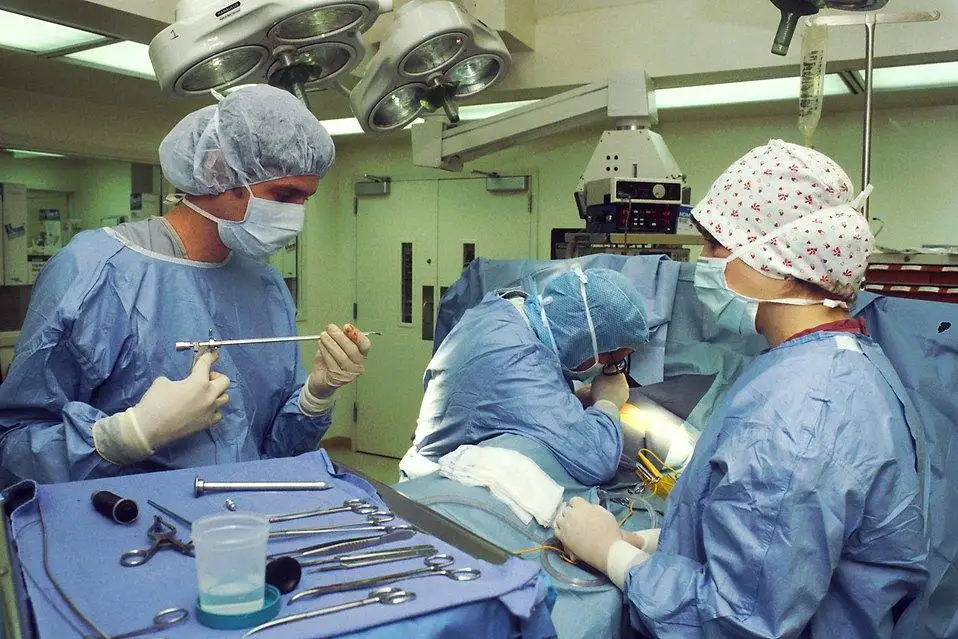Tracheostomy: The Breathing Lifeline
When a child faces severe respiratory issues, a tracheostomy may be the lifesaving intervention needed. Let’s delve into this surgical procedure and its implications for pediatric care.
What is a Tracheostomy?
A tracheostomy is a surgical procedure that creates an opening in the neck to access the trachea (windpipe). This allows for the insertion of a tube to facilitate breathing when the usual airways are obstructed or compromised.
Indications: When is it Necessary?
Tracheostomies are generally considered in cases of:
- Airway Obstruction: Due to tumors, trauma, or congenital anomalies.
- Long-term Ventilation: For conditions like severe cerebral palsy.
- Respiratory Failure: In cases of acute or chronic illness.
The Procedure: What to Expect
The surgery involves:
- Anesthesia: General anesthesia is administered.
- Incision: A cut is made in the neck.
- Tube Insertion: A tracheostomy tube is placed in the opening.

Post-Operative Care: The Road to Recovery
Post-surgery care is crucial and includes:
- Hygiene: Regular cleaning of the tracheostomy site.
- Monitoring: For signs of infection or blockage.
- Speech and Swallowing Therapy: As needed.
Risks and Complications: What to Watch For
While generally safe, risks can include:
- Infection: Proper hygiene can mitigate this.
- Scarring: Around the surgical site.
- Airway Blockage: Regular monitoring is essential.
Long-Term Outlook: Living with a Tracheostomy
Many children adapt well to tracheostomies, but ongoing medical care is essential. Some may eventually undergo a procedure to close the tracheostomy once it’s no longer needed.
Navigating the Long Road: Life After Tracheostomy Surgery
Tracheostomy surgery is a critical intervention that can be life-saving for children facing severe respiratory challenges. However, the journey does not end with the surgical procedure; it marks the beginning of a unique path of care, adaptation, and ongoing medical attention. In this section, we explore the nuances of life after tracheostomy, emphasizing the importance of post-operative care, potential complications, and the long-term outlook for these resilient young individuals.
Post-Operative Care: A Pillar of Success
The immediate post-operative period is pivotal in determining the success of a tracheostomy. Comprehensive care involves meticulous attention to hygiene, continuous monitoring, and targeted therapies.
Hygiene Protocols: Safeguarding Against Infections
Ensuring cleanliness around the tracheostomy site is paramount. Regular cleaning, changing of tracheostomy tubes, and adhering to sterile protocols significantly reduce the risk of infections. Caregivers play a crucial role in maintaining a sterile environment, and they are often provided with training to carry out these tasks effectively.
Monitoring for Complications: Vigilance in Every Breath
Given the delicate nature of tracheostomy, close monitoring for potential complications is a constant necessity. Signs of infection, blockage, or any unusual changes in breathing patterns require immediate attention. Regular medical check-ups and consultations with healthcare professionals are integral to spotting and addressing complications promptly.
Speech and Swallowing Therapy: Nurturing Communication Skills
For children with tracheostomies, speech and swallowing therapy are often essential components of post-operative care. These therapies aim to enhance communication skills and address potential challenges related to swallowing, ensuring a holistic approach to the child’s well-being.
Navigating Risks: Understanding Complications
While tracheostomy surgeries are generally safe, being aware of potential risks and complications is crucial for informed decision-making and proactive management.
Infection Management: A Key Priority
Infections, though preventable with proper hygiene, remain a primary concern. Timely recognition and effective management are essential to prevent complications. Antibiotics may be prescribed as a preventive measure or as a treatment if an infection occurs.
Scarring Concerns: Balancing Aesthetics and Functionality
Scarring around the surgical site is a natural outcome of tracheostomy surgery. While most scars fade over time, some children may experience hypertrophic scarring, potentially impacting aesthetics. Balancing the functional benefits of the tracheostomy with cosmetic considerations is part of the ongoing dialogue between healthcare providers and families.
Airway Maintenance: Guarding Against Blockages
Regular monitoring of the tracheostomy tube is crucial to prevent airway blockages. Families are often educated on recognizing signs of blockages and instructed on emergency measures. A proactive approach to airway maintenance is vital for the child’s safety and well-being.
Beyond the Tube: Long-Term Outlook and Closure Possibilities
Living with a tracheostomy is a dynamic journey, and the long-term outlook varies for each child. In this section, we explore the adaptive capacities of children with tracheostomies and the potential for closure once the respiratory challenges are mitigated.
Adaptation and Resilience: Thriving with a Tracheostomy
Children are remarkably adaptive, and many adjust well to life with a tracheostomy. With proper care, support, and ongoing medical attention, they often participate in regular childhood activities, attend school, and develop social skills. The resilience demonstrated by these young individuals, coupled with advancements in medical care, contributes to an improved quality of life.
Closure Considerations: A Step Towards Normalcy
For some children, the need for a tracheostomy diminishes over time as respiratory conditions improve. Closure procedures, aimed at closing the tracheostomy site, may be considered. These surgeries, while not always applicable, represent a significant milestone in the journey toward respiratory independence. The decision to pursue closure is typically made collaboratively between healthcare providers and families, considering the child’s overall health and respiratory status.
Empowering Families: A Holistic Approach to Pediatric Respiratory Care
As we delve further into the intricacies of pediatric respiratory care, it becomes apparent that the journey after a tracheostomy is a collaborative effort. Empowering families with knowledge, providing ongoing support, and fostering open communication are pivotal components of this holistic approach.
Education for Empowerment: Equipping Caregivers with Knowledge
Educating caregivers is fundamental to the success of pediatric respiratory care. Families of children with tracheostomies receive comprehensive training on various aspects, including tracheostomy tube care, recognizing signs of complications, and emergency response measures. This educational component not only enhances caregivers’ confidence but also ensures a safe and nurturing environment for the child.
Community Support: Building Networks for Shared Experiences
Navigating life with a tracheostomy can be both challenging and rewarding. Establishing connections with other families facing similar situations provides a sense of community and shared experiences. Support groups, both in-person and online, offer a platform for families to exchange insights, discuss challenges, and celebrate milestones. The emotional support gained from these networks is invaluable and contributes to the overall well-being of both children and caregivers.
Innovations in Pediatric Respiratory Care: Shaping the Future
The landscape of pediatric respiratory care is continuously evolving, with ongoing innovations shaping the future of interventions and support. In this section, we explore recent advancements that hold promise for enhancing the quality of life for children with tracheostomies.
Telehealth Services: Bridging Gaps in Access
Telehealth services have emerged as a transformative tool, especially for families in remote or underserved areas. Virtual consultations provide a convenient and accessible means for healthcare professionals to monitor the child’s progress, address concerns, and offer guidance. The integration of telehealth services into pediatric respiratory care represents a significant step towards improving accessibility and continuity of care.
Technological Advances: Enhancing Tracheostomy Management
Technological innovations continue to play a crucial role in enhancing tracheostomy management. Improved tracheostomy tubes with features such as adjustable cuffs, enhanced materials, and innovative designs contribute to increased comfort and functionality. Additionally, mobile applications designed for tracking and managing tracheostomy care empower caregivers with real-time information and support.
Looking Ahead: The Promise of Personalized Pediatric Respiratory Care
As we look ahead to the future of pediatric respiratory care, the concept of personalized care emerges as a cornerstone. Tailoring interventions and support based on the unique needs of each child fosters a more effective and compassionate healthcare approach.
Individualized Care Plans: Nurturing Each Child’s Potential
Recognizing the individuality of each child with a tracheostomy, healthcare providers are increasingly focused on developing personalized care plans. These plans consider the child’s specific medical history, respiratory requirements, and developmental milestones, ensuring a tailored and responsive approach to care. This personalized strategy aims not only to address immediate needs but also to nurture the child’s overall growth and well-being.
Conclusion: Charting a Compassionate Course Forward
The journey of pediatric respiratory care, especially in the context of tracheostomy, is marked by resilience, collaboration, and continuous advancements. As we navigate the complexities of medical interventions, support systems, and technological innovations, it is evident that the well-being of each child is at the heart of these efforts.
In conclusion, we embark on this compassionate course forward, recognizing the strength of families, the dedication of healthcare professionals, and the promise of ongoing research and innovation. The road may present challenges, but with collective commitment and a patient-centered approach, we strive for a future where every child with respiratory needs can thrive, breathe freely, and embrace a life full of possibilities.
Next Steps
If you find this information beneficial and wish to stay updated on children’s health topics, consider subscribing to our newsletter. If you have concerns about respiratory issues that may require a tracheostomy, feel free to book an appointment with Dr. Michael Nwaneri. We’re here to offer expert advice, no obligations.



